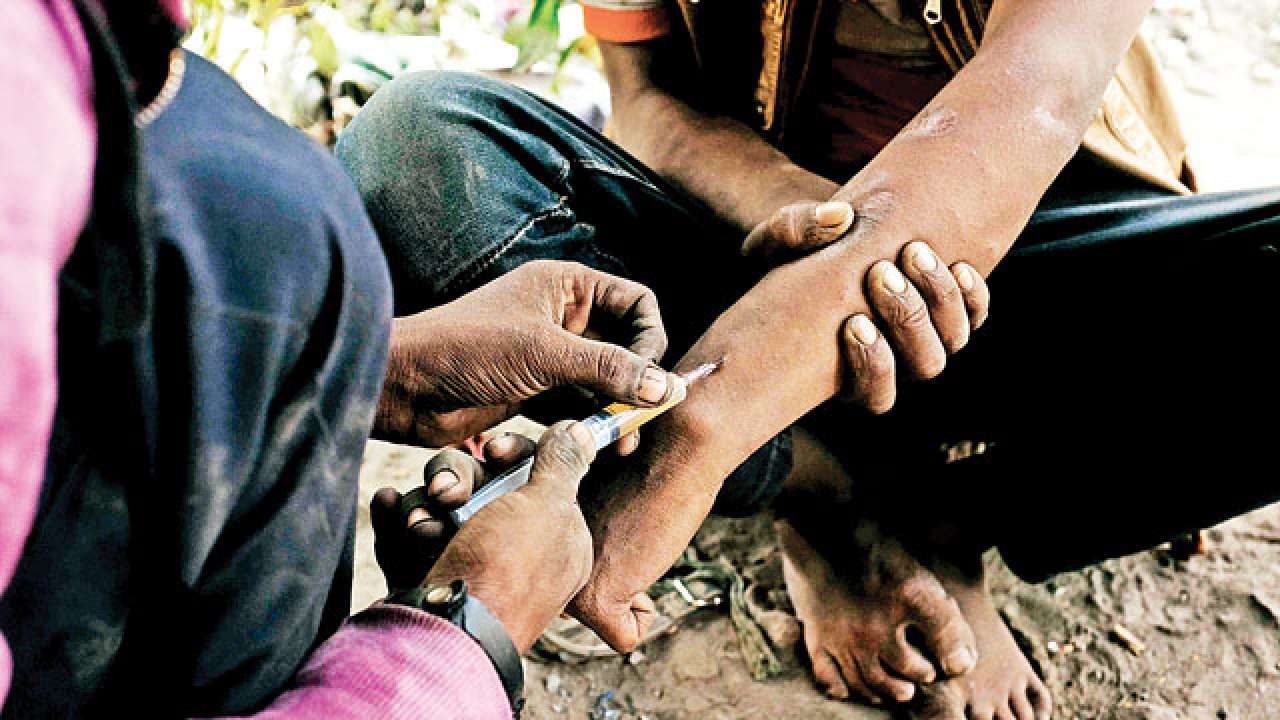A first of its kind study has found around 2 percent prevalence of substance abuse, majorly opioids, in two districts of Kashmir. The percentage translates into Rs 3.7 crore being spent every day on drugs of abuse by 17000 people in the two districts.
Institute of Mental Health and Neurosciences (IMHANS) has carried out a pilot study to find the contours of substance abuse in Srinagar and Anantnag commissioned by World Vision India. The study is titled “Pattern and prevalence of substance use and dependence in Kashmir: Special focus on Opioids”.
The study involved 300 participants, recruited in a novel manner through a token system. It has revealed that 1.9 percent population in the two districts is abusing substances of various kinds. The percentage, the researchers have evaluated, translates into 17,000 people abusing drugs in the sampled districts.
Shockingly, of the total number of substance abusers, 87.3 percent abuse opioids – drugs derived from or resembling opium. Heroin is the most widely used opioid in the two districts, the survey has evaluated.
“Opioids cause the most harm, accounting for two-thirds of the deaths attributed to drug use disorders,” Dr Yasir Rather, the proponent of the study, who works as in-charge of the drug de-addiction center of IMHANS, said.
Opioid dependence has spread across all parts of these districts and is no longer concentrated in some areas only, he said.
He said it was astounding and disturbing to find through the study that 45 percent of substance abusers were using Intravenous Drugs (IV) with 91 percent of them using IV heroin as the main drug. More than half of them live with hepatitis C, and approximately one in eight lives with HIV. “We found 71 percent of those abusing heroin and other opioids intravenously were sharing needles,” Dr Rather said.
The study has revealed that 97 percent opioid abusers were young males, most of them educated, skilled and from economically sound families. Their income was “at least Rs 30000 monthly”.
Peer pressure, boredom, lack of recreational activities, psychological stress were cited as the primary reasons for the abuse.
“Stereotypical socio demographic profile of substance users in Kashmir is changing. Easy availability of drugs, instability and inadequate rules governing trafficking of drugs can be cited as main reasons for this change,” Dr Rather said.
Opioids are one of the costliest drugs and pose a serious threat of fuelling a criminal crisis. The study has estimated the economic burden of opioid abuse in the two districts based on prevalence and extrapolating findings. “The expenditure on consumption of opioids in two districts of Srinagar and Anantnag is Rs 3,74,90,329,” notes the study, the first to deduct the costs of abuse here in Kashmir’s two districts.
Dr Rather hopes to find support for carrying out similar study in other districts of Kashmir. “We are on the precipice and the study, like we did, is a basis of formulating a response to the drug crisis in Kashmir,” he said.
He thanked Prof Mohd Maqbool Dar, Prof Arshad Hussain and Prof Zaid Wani and World Vision India for the support to the study.




